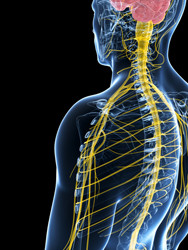Elucidating neural tube patterning
The EU-funded project 'Systematic analysis and modeling of the gene regulatory network underlying neural tube patterning' (NEURAL TUBE NETWORK) was initiated to elucidate the gene regulatory network (GRN) involved in neural tube patterning. The researchers used the chick embryo for transcriptional profiling. Neural tube patterning involves the expression of different types of transcription factors (TFs) and signalling molecules such as sonic hedgehog (Shh) to produce functionally-distinct neuronal subtypes. The Shh-controlled GRN is a major player in controlling this process and determines the fate of these neuronal subtypes. Scientists performed high throughput mRNA sequencing (HTS) on chick neural tube cells for transcriptome analyses at different time-points of Shh signalling. Differentially expressed genes were successfully identified and results were validated using data from Nanostring nCounter, a fully automated system to profile RNA and DNA. A chick TF database was generated and used to annotate the transcriptome data obtained previously. The researchers then compared the profiles of differentially expressed TFs from altered Shh signalling at different periods. Results revealed that a combination of specific TFs need to be expressed to generate distinct neuronal progenitor domains (e.g. p3 and pMN) during neural tube patterning. These p3 and pMN domains are spatially distinct in the ventral spinal cord where the p3 domain produces V3 interneurons and pMN generates somatic motoneurons. In parallel, work is ongoing to develop computational approaches to model the Shh-controlled GRN to represent gene regulation by TFs during ventral neural tube patterning. Project outcomes have revealed that neural tube TFs act alone or in combination to produce different progenitor gene expression profiles in response to Shh concentration. Validation of these findings will have important implications with regard to understanding the dynamics of gene regulation and its role in spinal cord development. Study results could also be extrapolated to other developing tissues and used to develop innovative medical interventions through stem cell therapy or artificial bone or skin grafts.







